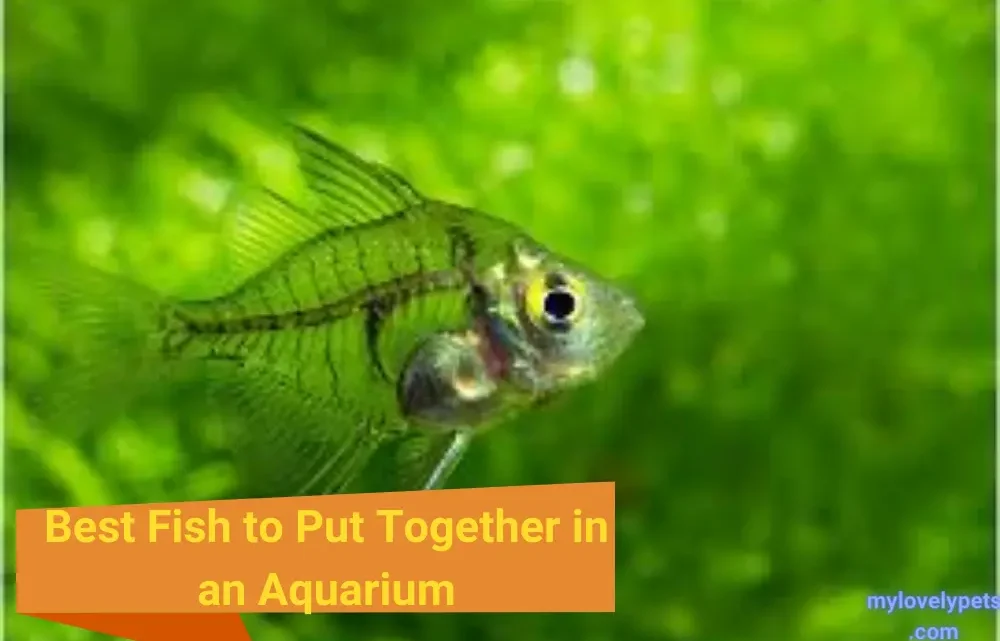
Best Fish to Put Together in an Aquarium: A Comprehensive Guide
Dive into the beautiful world of tropical fish. Both freshwater and saltwater species can bring the bright beauty of tropical water regions to your home aquarium. Although these aquatic friends usually have the ocean all to themselves, they do best in an artificial environment that mimics their native environment. Discover the best fish to put together in an aquarium as compatibility becomes a crucial factor. Your underwater friends’ friendship guarantees a stress-free haven.
Why is this so important? One of the worst things that can happen to tropical fish is stress. Recognizing compatible tank mates is crucial for a healthy aquatic community, as it prevents aggressive clashes, potential harm, or even fishy standoffs. Let’s learn about the differences between fish based on their size, personality, and even what they like to eat. Come with us as we explore the wonderful world of tropical fish, where balance rules and compatible pairings are the key to a peaceful underwater world.
The Importance of Compatibility
Stress: The Silent Fish Killer
Imagine living with someone who constantly annoys you. Not fun, right? Well, for fish, stress is their worst enemy. It’s like the silent assassin lurking in your tank. In crafting a harmonious aquatic community, when fish get stressed, it opens the door to a bunch of health issues that no one wants.
To keep your underwater pals happy and healthy, we need to understand what stresses them out. It could be the wrong tank mate, a cramped living space, or even a territorial dispute. Knowing these stress triggers helps us create a more chill environment.
2. Avoiding Tank Wars: Destructive Situations
Fish are like the neighbors in your apartment building. Some are cool, others not so much. If you throw in a bunch of incompatible fish, you might end up with a full-scale war in your tank. Constant fighting isn’t just drama; it’s a health hazard.
Picture this: one fish decides it’s the boss and starts picking on the others. It’s like having a bully at school, but underwater. This constant battling stresses everyone out, leading to sick and unhappy fish. No one wants that in their aquatic community.
Factors Affecting Compatibility:
Fish Size, Personality, and Eating Habits
When it comes to compatibility, size matters! It’s essential to consider the size of your fish and how they interact with each other. Some fish may get along better if they are similar in size, reducing the risk of conflicts or one fish dominating the tank. Additionally, understanding the personality traits of your fish is crucial. Just like people, fish have different temperaments. Researching the characteristics of each species will help you choose fish that share similar behaviors, making it more likely for them to get along.
Feeding habits are another vital aspect. Fish may have specific preferences in terms of where and how they eat. For instance, if one fish prefers the top of the tank, while another prefers the bottom, providing a variety of hiding spots and feeding areas can prevent disputes over food.
2. Fish Sex and Tank Harmony
Believe it or not, the gender of your fish can significantly impact the atmosphere in your tank. Some male fish are territorial and might fight with other males, or even with females after mating. To maintain a peaceful tank, it’s essential to understand the social dynamics of your fish’s gender interactions. Ensuring a proper balance and avoiding overcrowding can help minimize aggression related to mating behaviors.
3. Stress Prevention for Fish Well-Being
Stress is a silent enemy in the world of aquariums. It can lead to various health issues and even be fatal for your fish. To create a stress-free environment, consider factors like water quality, lighting, and overall tank conditions. Adequate hiding spots, plants, and caves can give your fish a sense of security, reducing stress levels. Also, maintaining a consistent feeding routine and paying attention to any changes in behavior can help you detect stress early on.
Best Tropical Fish to Put Together in an Aquarium
Choosing the right mix of tropical fish for your aquarium can turn your underwater world into a harmonious and vibrant community. Let’s dive into a guide on compatible fish species that can peacefully coexist:
1. Guppies

- Size: Typically 1.5-2 inches.
- Temperature Range: 72-82°F (22-28°C).
- Tank Size: Minimum of 10 gallons.
Guppies are like the social butterflies of the aquarium. These small, colorful fish are known for their peaceful nature, making them great companions for various species. Keep in mind that larger fish might find guppies’ flowing fins tempting, so it’s wise to avoid housing them together.
2. Corydoras Catfish
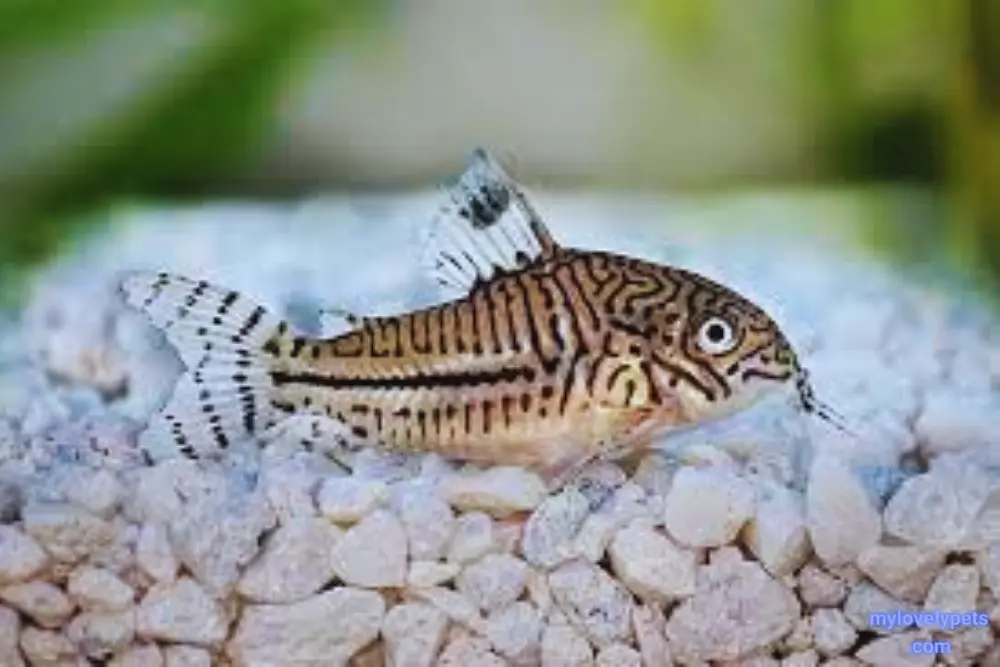
- Size: Around 1-2 inches.
- emperature Range: 72-78°F (22-26°C).
- Tank Size: Minimum of 20 gallons.
Meet the bottom dwellers with a quirky charm – Corydoras Catfish. These slow-moving fish play a crucial role in keeping the tank clean by feeding from the bottom. Pair them with guppies for a delightful combination, but ensure they are well-fed to prevent any unexpected territorial behavior.
3. Glass Fish

- Size: Usually around 2 inches.
- Temperature Range: 75-82°F (24-28°C).
- Tank Size: Minimum of 10 gallons.
Delicate and translucent, Glass Fish add a touch of elegance to your aquarium. However, be cautious when choosing them, as some may have been injected with dye, which can lead to infections. Opt for the natural, hearty ones to ensure a peaceful cohabitation.
4. Tiger Barbs
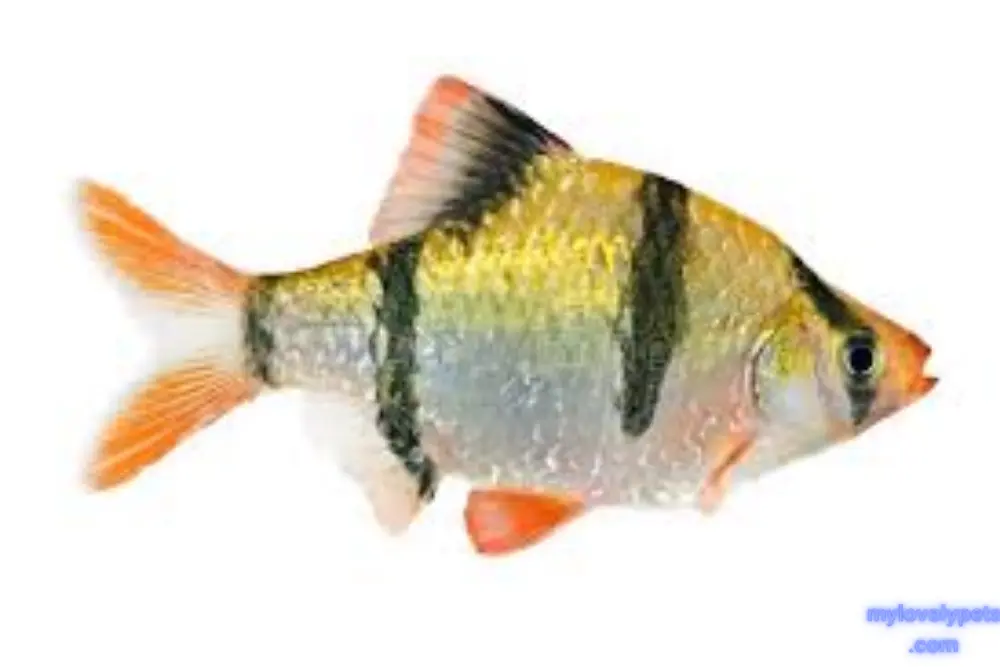
- Size: Usually 2-3 inches.
- Temperature Range: 74-79°F (23-26°C).
- Tank Size: Minimum of 20 gallons for a school.
Enter the feisty fellows of the underwater world – Tiger Barbs. These fish thrive in schools, and while they can get along with various species, they might pick on smaller fish. Consider their dynamic personality when selecting tank mates and avoid introducing timid species to the mix.
5. Mollies
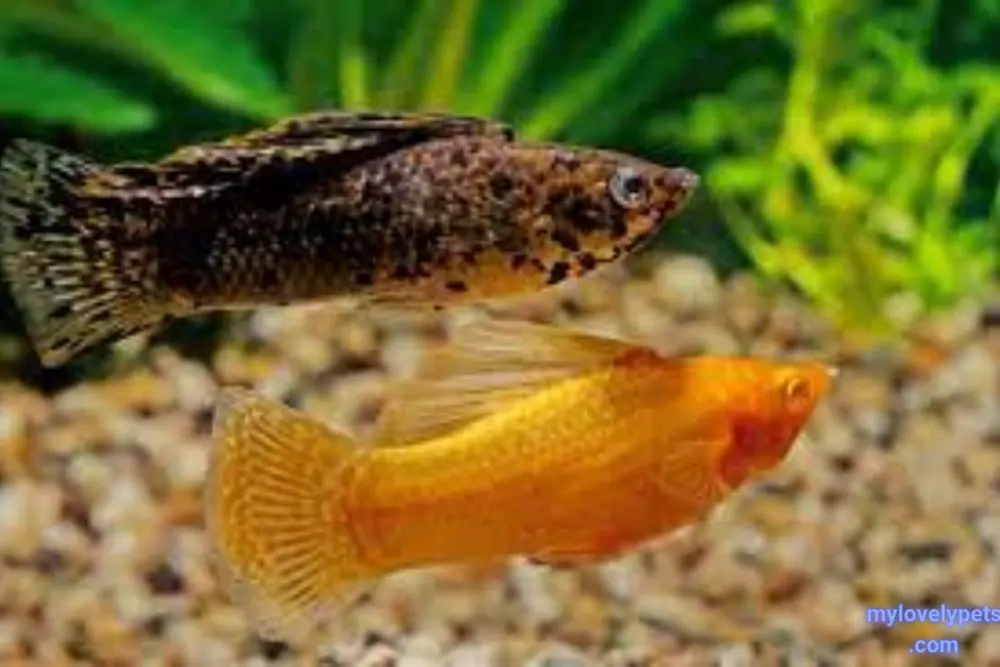
- Size: Typically 2-4 inches.
- Temperature Range: 75-80°F (24-27°C).
- Tank Size: Minimum of 20 gallons.
Mollies, resembling underwater works of art, are peaceful and adaptable. However, maintaining harmony in the tank requires some consideration. Opt for a one male to every four females ratio to prevent stress, ensuring a tranquil environment for these beautiful fish.
6. Tetras
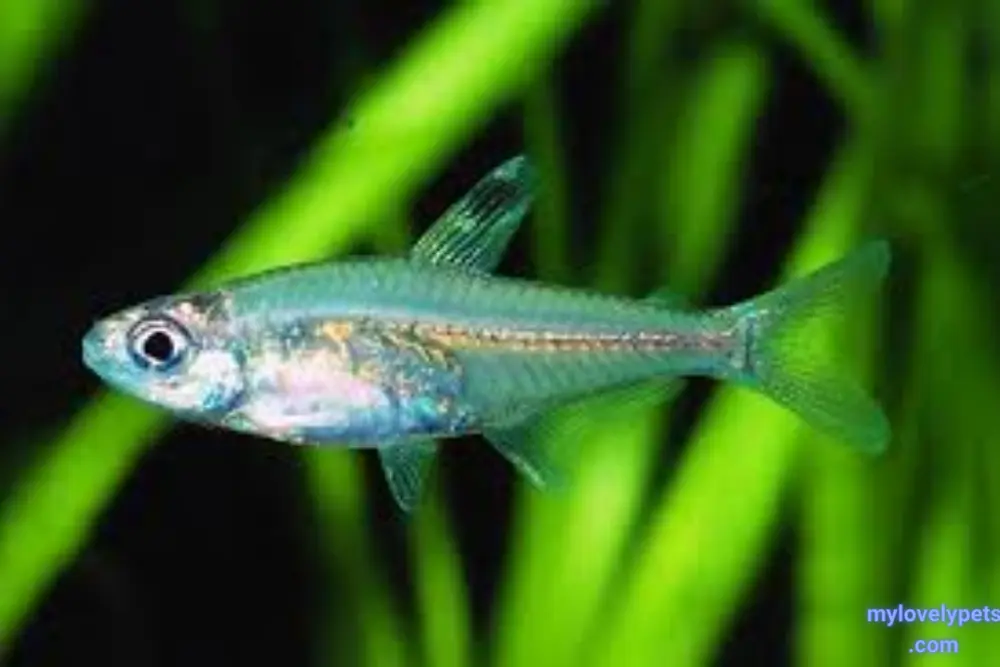
- Size: Range from 1-2 inches.
- Temperature Range: 70-80°F (21-27°C).
- Tank Size: Minimum of 10 gallons for a small group.
Tetras, the socialites of the aquarium, easily get along with various fish species. However, be mindful of their smaller size and avoid pairing them with significantly larger fish. Tetras contribute to the lively atmosphere, making them a favorite for community tanks.
7. Swordtails
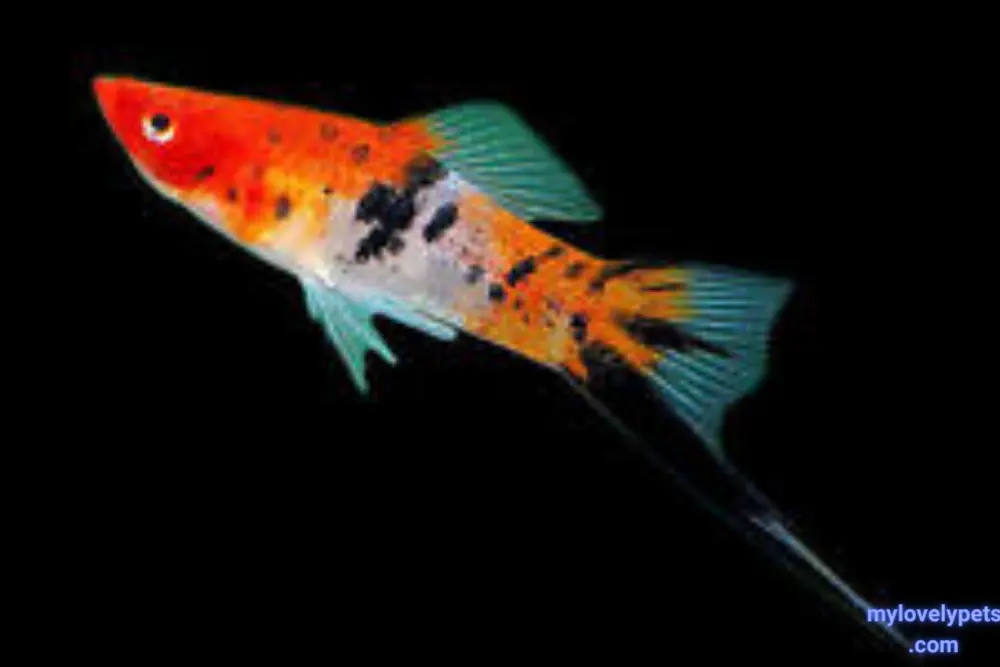
- Size: Typically 2-4 inches.
- Temperature Range: 72-82°F (22-28°C).
- Tank Size: Minimum of 20 gallons.
Swordtails bring a sense of tranquility to your aquatic community. These peaceful fish enjoy the company of others and are an excellent match for mollies and similar-sized companions. Create a serene underwater landscape by including these graceful swimmers.
Each fish species has its own unique characteristics and considerations. Whether it’s the vibrant colors of guppies, the bottom-dwelling charm of Corydoras Catfish, or the lively presence of Tetras, understanding the traits of each species is key to a thriving and compatible aquarium community.
Fish Not Suitable for Tank Mates
Choosing the right tank mates for your aquarium is crucial to ensuring a harmonious underwater community. While many tropical fish can coexist peacefully, there are some species that are simply not suitable as tank mates. Let’s take a closer look at these incompatible fish:
1. Goldfish
Goldfish are often seen as solitary swimmers for a reason. These vibrant orange fish can grow quite large and have territorial tendencies. They need ample space and might not play nice with other smaller or more delicate fish in the tank. Additionally, goldfish produce a significant amount of waste, which can impact water quality and create an unsuitable environment for certain tank mates.
2. Cichlids
Cichlids, with their vibrant colors and unique behaviors, are a popular choice for aquarium enthusiasts. However, they are known for their territorial nature and can become quite aggressive, especially during breeding periods. Mixing different cichlid species or introducing them to non-aggressive fish may lead to conflicts, making them less than ideal for community tanks.
3. Bettas
Betta fish, also known as Siamese fighting fish, are known for their beautiful, flowing fins and vibrant colors. However, the name “fighting fish” isn’t just for show. Male bettas, in particular, can be highly aggressive towards other males, leading to fights that may result in serious injury or even death. Even females can display territorial behaviors, making them unsuitable for sharing a tank with other bettas.
4. Green Spotted Puffer
The Green Spotted Puffer is an intriguing and unique fish known for its charming appearance. However, they have a rather specialized diet, primarily consisting of snails and crustaceans. This dietary requirement can make them incompatible with many other fish that may become potential snacks. Moreover, their territorial nature can lead to aggression, causing issues in a community tank.
How to Introduce Fish to Each Other?
Bringing new fish into your aquarium can be an exciting adventure, but it’s crucial to ensure a smooth introduction to prevent stress and aggression among your aquatic buddies. Here’s a quick and easy way to make your fishy new friends feel at home.
1. Set Up a Quarantine Aquarium
Before introducing new fish to your main tank, consider having a quarantine aquarium. This separate space allows new arrivals to acclimate to water conditions and nutrients without immediately interacting with your existing fish. It’s like a transition period to ensure everyone stays healthy and happy.
2. Dim the Lights and Maintain Feeding Routines
When it’s time to make the move, create a calm and low-stress environment by dimming the aquarium lights. Lowering the light intensity helps reduce aggression, especially during the initial introduction. Additionally, ensure your existing fish are well-fed before adding newcomers. A well-fed fish is generally less aggressive, making the transition smoother.
3. Rearrange Tank Decorations
Fish are territorial creatures, and introducing a new member can disrupt established territories. To level the playing field, consider rearranging tank decorations before adding the new fish. This helps eliminate established territories and allows all fish to explore new spaces together. It’s like redecorating the neighborhood for everyone to share.
The Signs That Your Fish Is Under Stress
The tropical fish tank is a great way to bring the ocean into your home. Keep an eye on your fish friends; it’s relaxing and fascinating, but they need you. Their worst enemy is stress, so it’s crucial to recognize the symptoms early on.
Observing Fish Behaviors
Fish are not always the most expressive creatures, but they do have ways of showing us when something’s not right. Keep an eye on their usual behavior. If your once-active fish is suddenly hiding all the time or if they seem lethargic, it’s a red flag. Likewise, excessive fin clamping or rapid gill movement can indicate stress.
Identifying Aggression or Bullying
Fish may not wear tiny boxing gloves, but they have their ways of settling disputes. If you notice one fish relentlessly chasing another or constantly nipping at fins, that’s aggression. Bullying in the fish world is real, and it can lead to serious harm. Look out for torn or ragged fins, as these could be signs that a fish is being picked on.
Steps to Take if Fish Do Not Get Along
Sometimes, despite our best efforts, fish just don’t vibe with each other. It’s essential to intervene before things escalate. Here’s what you can do:
- Separate the Aggressor: If you identify a fish causing trouble, consider temporarily relocating it to a quarantine tank. This gives the bullied fish some relief and allows you to address the aggressor separately.
- Add More Hiding Spots: Create hiding spots with plants, caves, or decorations. This gives the bullied fish places to escape and reduces the stress of constant exposure to aggression. It’s like creating safe havens in the underwater neighborhood.
Final Thoughts
Finally, before you go, it’s important to go over some last points and practical advice for your underwater friends. Discovering the key to a harmonious aquarium is as simple as doing some research and getting to know your fish’s peculiarities. Knowing their likes and dislikes will make you sound like a master conducting a peaceful underwater symphony.
If the fish seem a bit testy, don’t worry; there are simple fixes. Rearrange their aquatic playground, add some new features, or consider a bigger tank – a bit like redecorating your fishy friends’ home. It’s all about creating a space where they can coexist without aquatic drama.
Tropical fishkeeping is an art, and a thoughtful, caring approach is your paintbrush. From your smallest neon tetra to the flamboyant mollies, each fish deserves respect and understanding. Dive into this knowledge, and witness your aquatic community flourish – the best fish to put together in an aquarium await your thoughtful care.
Also read here
The Ultimate Plecostomus Blue Phantom (l128)


